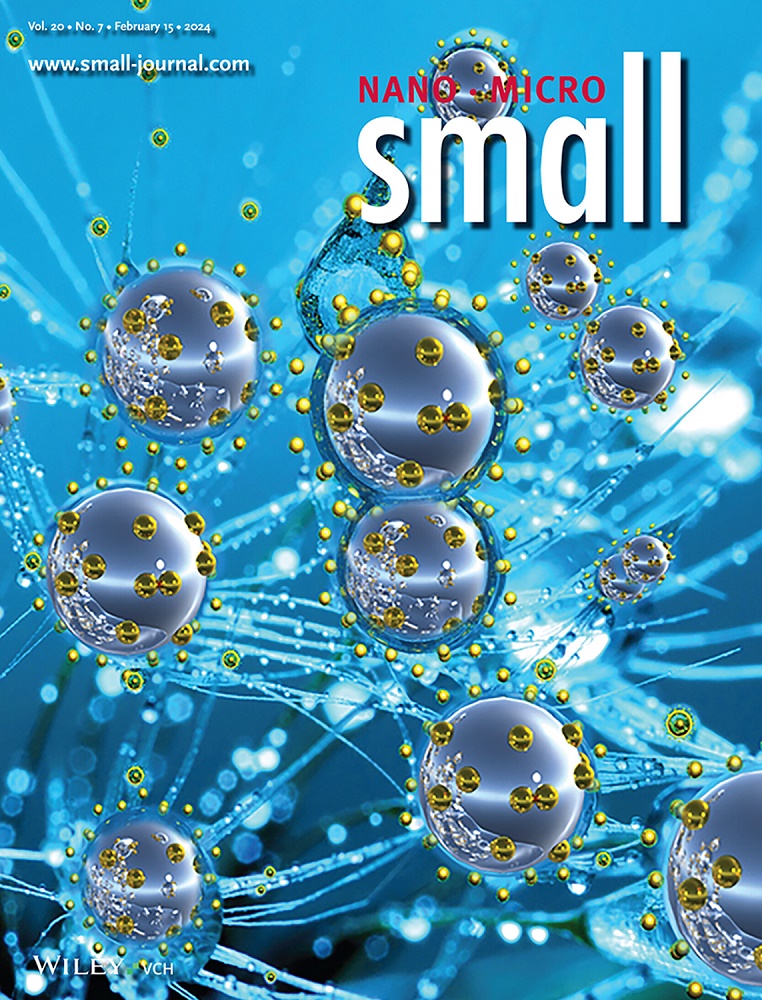Engineering Photo-Functionalities of OrganicInorganic Hybrid Metal Halides Toward Repeatable Optical Writing/Erasing and Multilevel Information Encryption.
IF 12.1
2区 材料科学
Q1 CHEMISTRY, MULTIDISCIPLINARY
引用次数: 0
Abstract
Organic-inorganic hybrid halides (OIHH) have garnered considerable attention as promising photo-functional materials. Nevertheless, the rational design of OIHH with tailored optical properties remains a formidable challenge. Herein, the synthesis of Sb3+-doped (benzamidine)2InCl5(H2O) crystals exhibiting intense visible-light emission is reported. Furthermore, photochromism (PC) and afterglow are achieved by exploiting intermolecular charge transfer between guest water and C═N+─H group within the crystalline lattice. Radicals with a characteristic absorption band at 520 nm are generated by photo-irradiation, which causes PC, while the energy stored in the long-lived radicals gradually transfers to Sb3+ centers, yielding an afterglow effect. Repeatable optical writing/erasing processes are demonstrated based on the reversible PC effect. In addition, a multi-level information encryption scheme is proposed based on the multiplexed integration of fluorescence color, PC, and afterglow. Therefore, this work not only develops a novel OIHH system but also offers a universal strategy for engineering photo-responsive functionalities by intermolecular charge transfer. While water promotes free radical reactions, it simultaneously accelerates PC bleaching, presenting a challenge that requires further research to resolve this dichotomy.面向可重复光学写入/擦除和多级信息加密的有机无机杂化金属卤化物的工程光功能。
有机-无机杂化卤化物(OIHH)作为一种有前途的光功能材料受到了广泛的关注。然而,合理设计具有定制光学特性的OIHH仍然是一个艰巨的挑战。本文报道了Sb3+掺杂的(benzamidine)2InCl5(H2O)晶体具有强可见光发射的合成。此外,光致变色(PC)和余辉是通过利用客体水和晶格内的C = N+─H基团之间的分子间电荷转移来实现的。光照射产生具有520 nm特征吸收带的自由基,产生PC,而储存在长寿命自由基中的能量逐渐转移到Sb3+中心,产生余辉效应。基于可逆PC效应,演示了可重复的光学写入/擦除过程。此外,还提出了一种基于荧光色、PC和余辉复用集成的多级信息加密方案。因此,这项工作不仅开发了一种新的OIHH系统,而且通过分子间电荷转移为工程光响应功能提供了一种通用策略。当水促进自由基反应时,它同时加速了PC漂白,提出了需要进一步研究来解决这一矛盾的挑战。
本文章由计算机程序翻译,如有差异,请以英文原文为准。
求助全文
约1分钟内获得全文
求助全文
来源期刊

Small
工程技术-材料科学:综合
CiteScore
17.70
自引率
3.80%
发文量
1830
审稿时长
2.1 months
期刊介绍:
Small serves as an exceptional platform for both experimental and theoretical studies in fundamental and applied interdisciplinary research at the nano- and microscale. The journal offers a compelling mix of peer-reviewed Research Articles, Reviews, Perspectives, and Comments.
With a remarkable 2022 Journal Impact Factor of 13.3 (Journal Citation Reports from Clarivate Analytics, 2023), Small remains among the top multidisciplinary journals, covering a wide range of topics at the interface of materials science, chemistry, physics, engineering, medicine, and biology.
Small's readership includes biochemists, biologists, biomedical scientists, chemists, engineers, information technologists, materials scientists, physicists, and theoreticians alike.
 求助内容:
求助内容: 应助结果提醒方式:
应助结果提醒方式:


